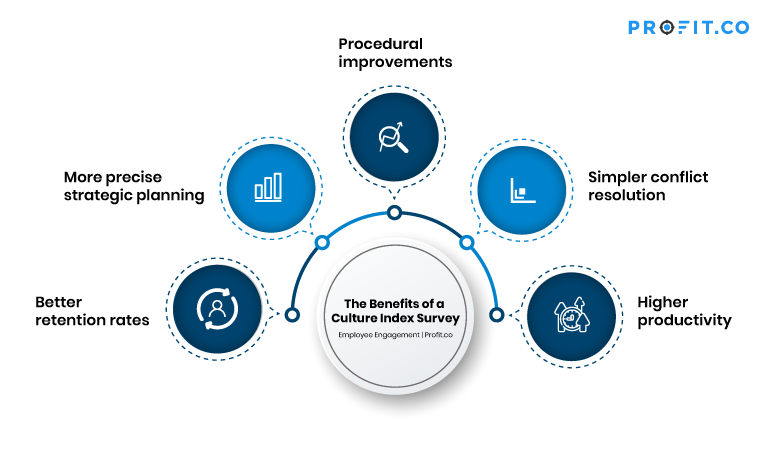Many people who work in larger organizations or corporate entities don’t really understand the importance of corporate culture for their continued success. In fact, when the phrase “corporate culture” comes to mind, most people think about company pool parties or team-building events.
However, company culture represents something far more important than how much fun employees have during work. Company culture provides unique insights in the process of workforce management. As you might have gathered already, no culture within a company is universally good or bad; at the end of the day, it suits some people and chafes against others.
Corporate culture is the only sustainable competitive advantage that is completely within the control of the entrepreneur. Develop a strong corporate culture first and foremost.
That’s why it’s important to know what kind of individuals your company culture attracts. It’s also crucial to learn what kind of people won’t work well within your organizational environment. But culture seems like something very intangible; how do you turn it and turn it into something quantifiable?
That’s where the culture index survey comes in!
How do culture index surveys work?
The culture index should definitely be one of the top priorities and the most highly regarded metrics in each company’s HR department. Seeing as most employees regard a compatible company culture as something crucial for their personal satisfaction in the workplace — a metric like the culture index will tell you how people within the company feel about the internal workings of the organization.
This index provides you with a way to analyze and determine the opinions, attitudes, and personal sentiments of your employees to a variety of aspects of their work experience. Plus, it’s a useful hiring benchmark as well. And performing a cultural index survey allows you to surmise all of these factors in one easy-to-analyze report.
And if you’re wondering what this survey looks like — generally, it’s divided into two pages. The first one contains almost two hundred adjectives which the employee or potential employee can select from — describing their own personality. And the second page contains a similar number of adjectives to choose from; this time describing their job role.
There are many variations of the culture index survey; but the key difference between it and other similar employee engagement surveys is that this survey has only this free-choice portion. There’s no preset number of adjectives that an employee or job candidate is supposed to pick; they can select two or two dozen, and the survey will still produce meaningful results.
Benefits of a culture index survey

There are plenty of benefits to utilizing a culture index survey, both in the management of existing employees and during the process of hiring new ones. Human resource managers might find that this kind of survey provides for:
- Better retention rates
- More precise strategic planning
- Procedural improvements
- Simpler conflict resolution
- Higher productivity
Better employee retention rates
One of the worst things that a company can be (in)famous for is having a large turnover rate; employees constantly looking to leave the company is a pretty good indicator of a toxic work culture. When your company culture makes for an inviting work environment, you will experience higher employee retention rates.
That’s why using a culture index survey matters. Its adjective-based responses provide for a descriptive and meaningful way for employees to show their honest views of their company. And at the end of the day, dissatisfied employees rarely make for a successful company. In a less direct way, this can also be beneficial for your customer retention rate, if we’re talking about B2C companies.
More precise planning
If you want a company to be successful in the long term — you need to have a long-term outlook. That’s why strategic planning is a crucial aspect of any truly successful endeavor. However, that’s only possible with a joint vision that all employees have — after all, the boat is the fastest when everyone is rowing in tandem.
You can use a culture index survey to gauge the perception of the company by its employees, and see if they have the right attitude towards where the company is headed. In turn, this also allows you to adjust your long-term plans. A combination of a healthy work culture and proper planning is a surefire recipe for success.
Procedural improvements
When you know the employees’ feelings about the company, you will be able to perform a more productive introspection into the procedures and processes on which the company runs. If you spot overwhelming employee dissatisfaction in a certain area, explore further; there’s bound to be some sort of gap that you need to bridge.
Of course, one of the biggest processes that a culture index survey helps with is the hiring and onboarding of new employees. You can easily use this kind of survey to judge whether a person is the right fit for your company culture. Sure, their resume will tell you whether they can do their job — but you also want to know if they’d fit into your work environment on a more human level. This survey will allow you to attract top talent and put the right people in the right job roles.
Simpler conflict resolution
Conflicts are a normal part of working in major corporate environments — or in any kind of organization with a lot of people who constantly interact, for that matter. The presence of conflict does not mean that a company is good or bad; it’s how it resolves conflicts that matters.
A culture index survey is great at helping you see if the employees are satisfied with how HR and other management handles conflict resolution; allowing you to make potential improvements in the process, and resulting in a more relaxed workplace overall.
Higher productivity
At the end of the day, employee productivity affects your bottom line directly — which is why you need to ensure that employees are happy with the workplace. And the best way to do this is to address any concerns and opinions that employees voice. However, they may not always approach you with a problem. Instead of letting it fester, a culture index survey can help you pinpoint unsatisfied employees, and see what you can do about their state of mind.
Final Thoughts
Using a culture index survey to help get a full understanding of employee satisfaction and experience within your company is a great idea for companies of all sizes and in all industries. While this might reveal some truths about your culture that you could be uncomfortable with, that is the first step to ensuring that you address these issues and your employees are more engaged and happy at work. Ensuring employee engagement is high is a surefire way to increase team productivity, employee retention, and even overall success for your company.
Employee engagement doesn’t need to be complicated. Using a software that allows users to digitally recognize, reward, and congratulate employees for their hard work and success is a great way to keep employees engaged no matter where they are in the world. Profit.co’s employee engagement module creates a virtual space where you can integrate engagement directly into your day-to-day workflow. To find out more about Profit.co’s software, visit our product page. To see this module in action, book a free demo with us today!

